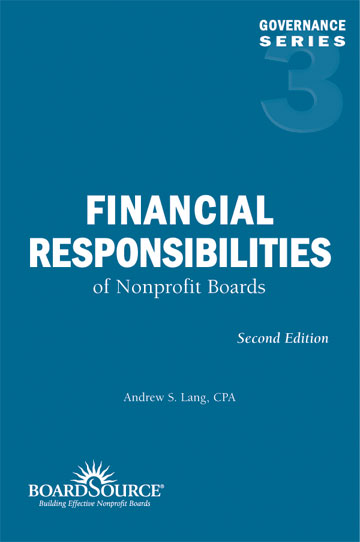
501(c)(3). The section of the United States Internal Revenue Code that establishes the requirements for tax-exempt status for charitable organizations. This term is often used to refer to an organization that has tax-exempt status.
Accrual-basis accounting. A method of accounting in which revenues are counted when they are earned, regardless of when they are collected, while expenses are recorded on a matching basis when they are incurred. Using this method, an unconditional pledge of a gift is a transaction recorded when the pledge is made, rather than when the gift is received. A bill is a transaction for payment and is recorded when the bill is received, not paid.
Accrual accounting provides a window of understanding into the impact of future cash receipts or payments and the effect of these transactions upon the financial position of the institution. This future-looking method can require the transactions to be cancelled at a later date such as when a pledge is no longer expected to be received. Pledges over a many-year period are recorded at less than full value under accrual accounting.
Assets. Tangible or intangible resources, including cash and property, owned by the school.
Asset allocation. The distribution of the institution’s investments across various categories, such as equities, bonds, treasury securities, and real estate.
Audited statements. End-of-year financial statements that have been audited in accordance with generally accepted auditing standards and, in the opinion of the audit firm, present the financial position of the institution in conformity with generally accepted accounting principles.
Auxiliary income. Gross revenues generated by school-owned apartments, dormitories, food service operations, bookstores, and summer programs (e.g. conferences and camps). Net auxiliary income is gross auxiliary revenues minus gross auxiliary expenses.
Balancing the budget. Adjusting the institutional operating and capital budgets so that total revenues equal total expenditures. If the school has reserves in temporarily restricted funds, the adjustments can include adding to (or subtracting from) these accounts. Revenues are difficult to adjust in the middle of a fiscal year, so most midyear budget balancing efforts are focused on expenditure changes and appropriation of reserves. When a proposed budget is being reviewed, balancing can include revenue changes such as fee increases or decreases, new fundraising efforts, and grant proposals. 
Board-designated reserves or quasi-endowment. Initially unrestricted financial assets set aside for special purposes by formal board resolution — a resolution that can include rules or procedures for adding to or subtracting from them. Because these rules and procedures can be changed by the board, financial statements record board-designated reserves as unrestricted.
Board-designated reserves or quasi-endowments are distinguished from permanent endowments— the terms of which are stipulated by donors— by the institution’s ability to use the entire value of the reserve, while it can use only limited portions of a permanent endowment.
Book value. The net amount at which an asset or asset group appears on the books of account, as distinguished from its market or intrinsic value. In the case of assets subject to reduction by valuation allowances, book value refers to cost or stated value minus the appropriate allowance such as depreciation for equipment, buildings, and leasehold improvements.
Cash balances. Investments readily available at their full value. Investments that can be sold at full value within one to three months are usually viewed as part of cash balances. For example, bank accounts are considered cash if they can be liquidated without significant penalty in one to three months, but a one-year certificate of deposit would not generally be considered part of cash balances.
Cash flow. The pattern of cash receipts and expenditures during the fiscal year. Cash flow is the underpinning for having sufficient cash available to meet scheduled expenses, of which payroll and tax obligations are most significant. Positive cash flow refers to periods in which more cash is received than disbursed; negative cash flow refers to periods in which more cash goes out than comes in, thus reducing cash balances.
Debt service. The amount of money required to pay in full the interest on outstanding bonds (or other debt obligations) and the principal of mortgages or maturing bonds. Interest expense is recorded in the institution’s “statement of activities” and principal payments are recorded in the “statement of financial position.”
Endowment. An investment account managed by the institution that is permanently restricted, either to preserve the fair value of the gift or as stipulated by the donor. In most U.S. states, endowments are regulated by the Uniform Prudent Management of Institutional Funds Act. 
Endowment draw. The amount of total investment return of an endowment fund that is used by an institution in a particular year. The draw may be specified by the original donor or by board resolution. The typical draw is three to five percent of the endowment’s 12-quarter average value (i.e., the average market value over the three previous years). This is also called endowment payout. See also Target rate of return.
Expendable net assets. The total of all unrestricted and temporarily restricted net assets, excluding net investment in physical plant and funds temporarily restricted for investment in plant or other long-term investments. Many financial advisers suggest that expendable net assets should be at least equal to five months of operating expenses and should be at least equal to the sum of long-term debt. This sum is the primary factor in both the primary reserve ratio and the viability ratio calculations.
Financial reports. A set of reports prepared for board and staff to represent the financial activities and condition of the school. The most effective financial reports consist of a narrative about progress on the seminary’s primary goals and objectives for the year with an accompanying table or two of data on that progress. See also Financial statements.
Financial statements. Financial tables that follow the specific definitions and formats required under generally accepted accounting principles (GAAP). Financial statements can be prepared only by certified public accountants. Supplemental financial statements prepared to meet management needs may not necessarily conform to GAAP. See also Financial reports.
Forecasting. A plan that assigns specific levels of revenues and expenses to future years. A good forecast is based on a series of events and activities that are compatible and mutually consistent. It is less important that the level of revenue or expense in any year be an accurate prediction of what revenue or expense actually turns out to be. A board may use a forecast to ascertain if its plans are mutually consistent with one another and whether the plans result in a series of outcomes that are consistent with the mission and priorities of the institution.
Fund accounting. The generally accepted accounting principles for not-for-profit institutions classifying assets, liabilities, and fund balances as either permanently restricted, temporarily restricted, or unrestricted.
Investment risk. The risk that the value of an investment may decline. The cash balances of a theological school generally have no investment risk, while endowment funds can have considerable investment risk. Investment risk is related to the return on investment a seminary desires and to the asset allocation of the investment portfolio.
IRS Form 990. A mandatory annual filing for U.S. tax-exempt organizations except churches and those with less than $25,000 in annual revenues. The form reports on achievement of the organization’s mission, the allocation of expenditures to each aspect of mission, gifts from major donors, and payments to staff, board members, and major vendors and consultants. Available to the public through GuideStar (guidestar.org), Form 990 is sometimes used by grantors to evaluate the effectiveness and relevance of a nonprofit organization. For more information, see www.intrust.org/Form990article.
 Liability. Probable future expenses or obligations arising from present transactions obligating the institution to transfer assets or to provide services to other entities in the future. The term does not include encumbrances (such as liens or easements).
Liability. Probable future expenses or obligations arising from present transactions obligating the institution to transfer assets or to provide services to other entities in the future. The term does not include encumbrances (such as liens or easements).
Net assets. Unrestricted net assets may include undesignated assets or board-designated assets or other unrestricted endowments. Temporarily restricted net assets may include contributions restricted for use in the next accounting periods, appreciation of permanent endowments, or beneficial interests in trusts or annuities. Permanently restricted net assets include investments in perpetuity. See also Endowment.
Net tuition. Tuition revenues minus financial aid. Financial aid is deducted from tuition revenues whether the financial aid is funded by donations or endowment distributions or represents a discount.
Nonprofit. An organization that is tax exempt. Nonprofits are distinguished from for-profits by how they spend any profit, not by whether they earn a profit. See also 501(c)(3).
Permanently restricted. A class of gifts in which the donor sets unchangeable rules that limit an institution’s ability to use the gifts. Restrictions generally specify the purpose for which funds can be spent as well as the amount that can be spent in any particular year. Permanently restricted gifts add to the wealth of a school, but they generally are not available for balancing a budget.
Target rate of return. In endowment and portfolio investment management, the desired return on investment. The target rate of return is closely related to asset allocation and investment risk. The endowment draw is usually related to the target rate of return. See also Endowment draw.
Temporarily restricted. Funds expected to be available for spending in the current year or in a limited number of future years. Temporarily restricted money is usually tied to specific expenses so that when an expense occurs, funds are immediately made available to fund the disbursement. For example, money from a grant is often temporarily restricted — already in the bank, but unable to be spent until the institution provides the service or creates the program that the grant is paying for. As the service or program is provided, the temporarily restricted funds are made available for it.
 |
| More financial terms are defined in Financial Responsibilities of Nonprofit Boards, 2nd edition, by Andrew S. Lang (BoardSource, 2009, 102 pp., $29). |
Unrestricted. Assets that can be used for any purpose. From time to time, a board may choose to limit the staff’s discretion on the use of some unrestricted monies, in which case the unrestricted monies may be called board-designated reserves. Unrestricted assets can be immediately available (in which case they are called unrestricted cash balances) or they may be limited as to the amount and time they are available (in which case they may be called unrestricted endowment or board-designated reserves).
Unrestricted cash balances. Assets immediately available for any purpose. These assets are usually invested in accounts with no investment risk, and therefore they typically have a low target rate of return.
This glossary was compiled and edited by In Trust Governance Mentors using various sources, including documents from BoardSource and the Washington State Administrative and Accounting Manual. Thanks to Lee Merritt for final editing.
More financial terms are defined in Financial Responsibilities of Nonprofit Boards, 2nd edition, by Andrew S. Lang (BoardSource, 2009, 102 pp. $29).